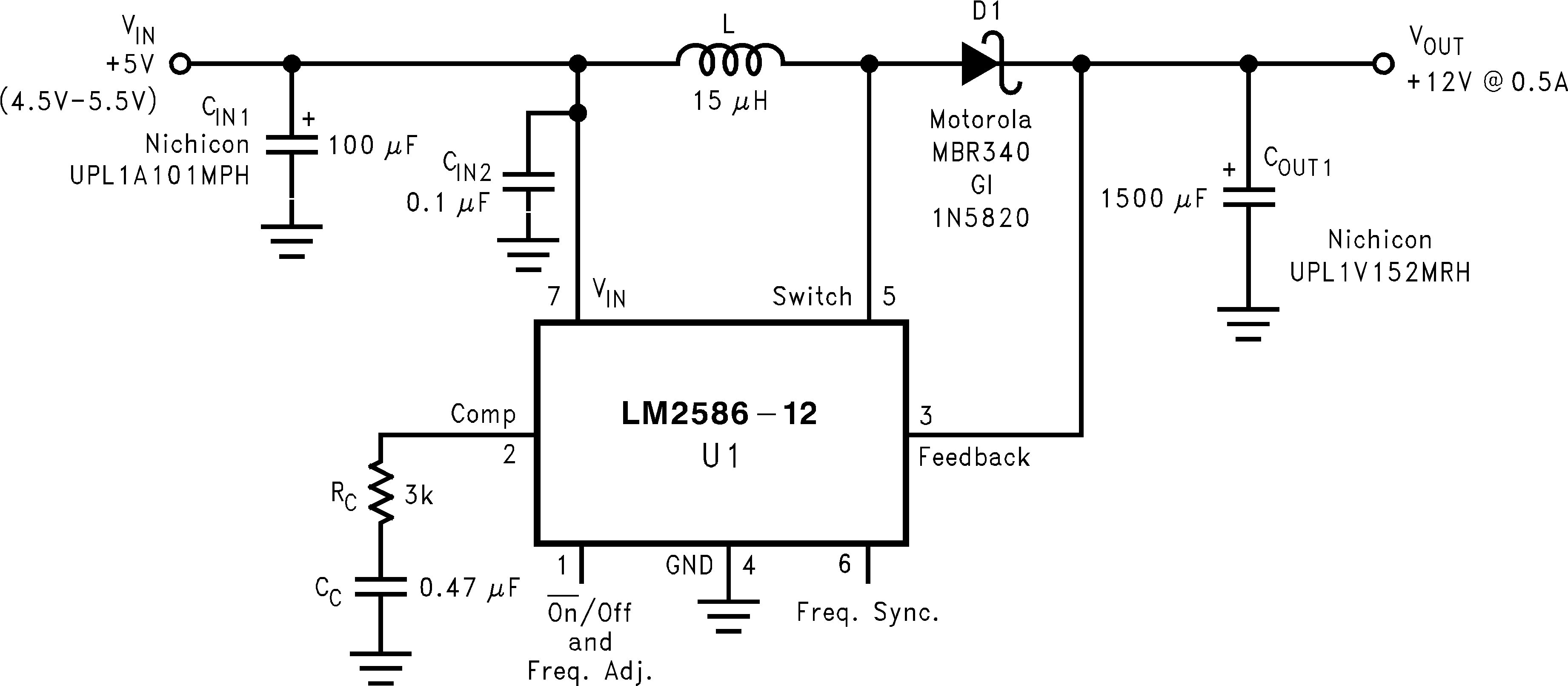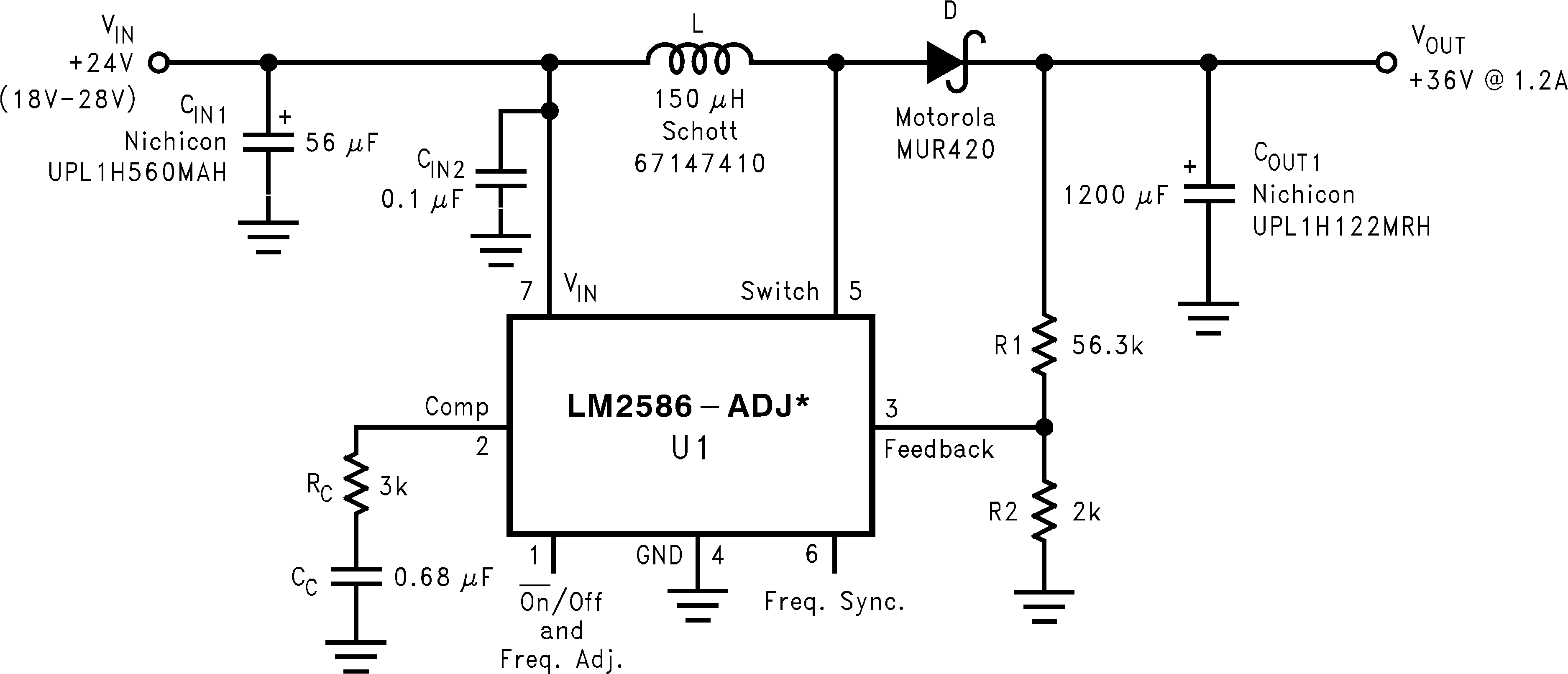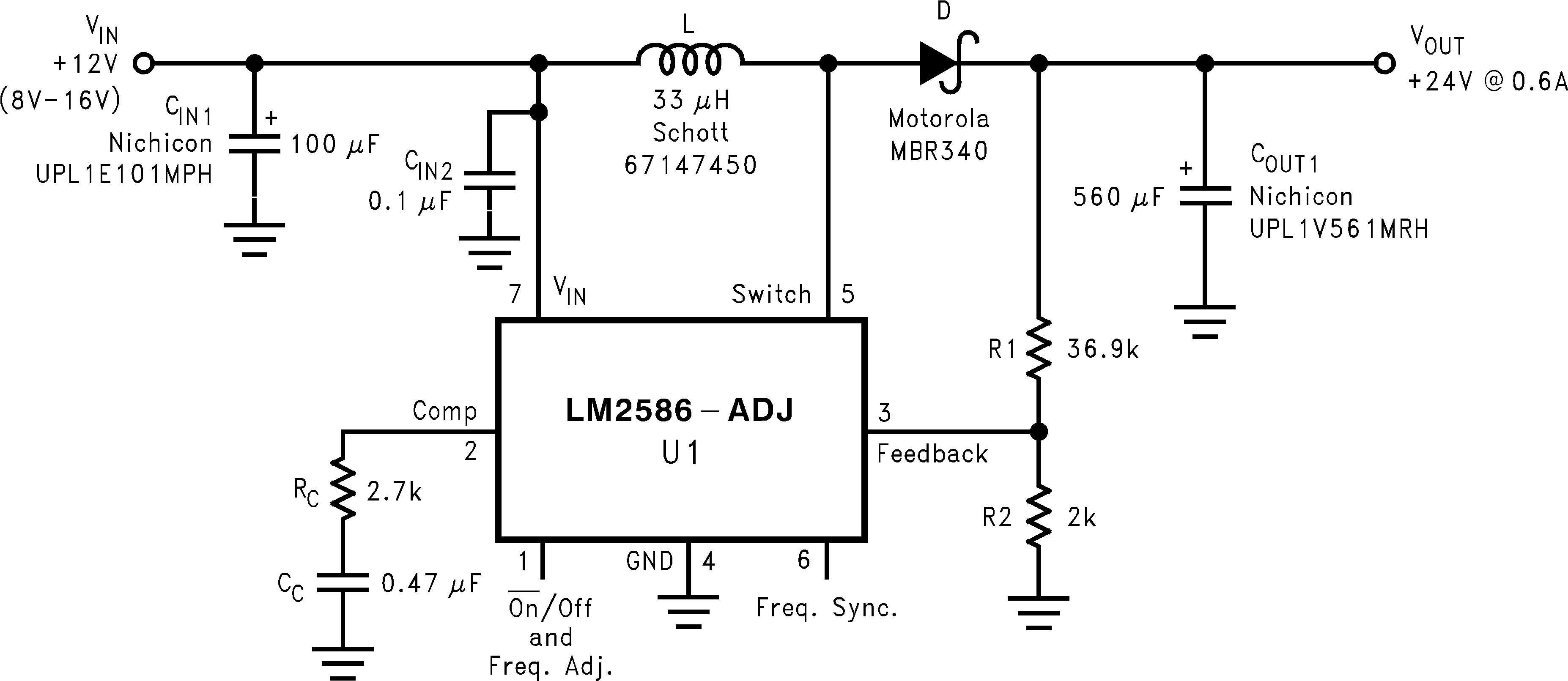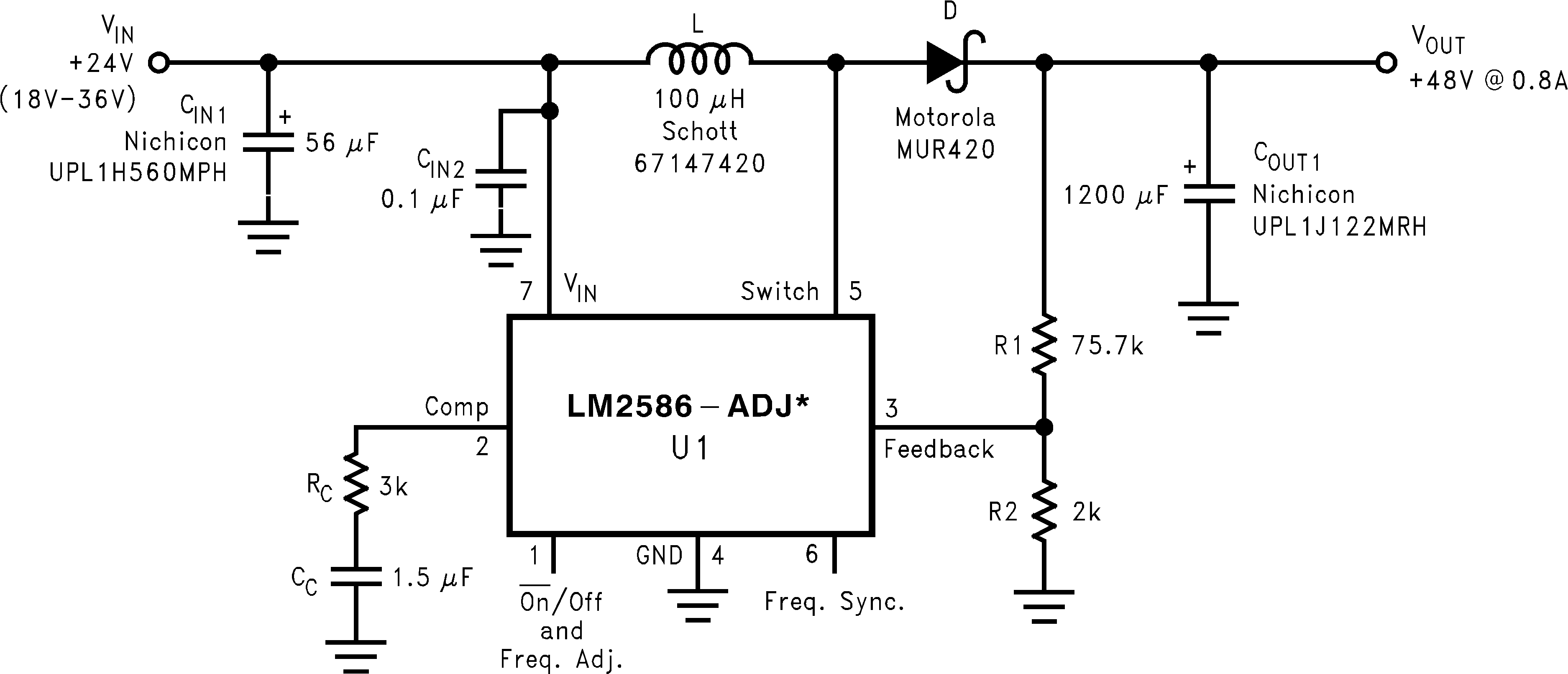SNVS121E May 1996 – May 2019 LM2586
PRODUCTION DATA.
- 1 Features
- 2 Typical Applications
- 3 Description
- 4 Revision History
- 5 Pin Configurations
- 6 Specifications
- 7 Detailed Description
- 8 Application and Implementation
- 9 Layout
- 10Heat Sink/Thermal Considerations
- 11Device and Documentation Support
- 12Mechanical, Packaging, and Orderable Information
Package Options
Mechanical Data (Package|Pins)
Thermal pad, mechanical data (Package|Pins)
- KTW|7
Orderable Information
8.2.2 Typical Boost Regulator Applications
Figure 50 through Figure 53 show four typical boost applications—one fixed and three using the adjustable version of the LM2586. Each drawing contains the part number(s) and manufacturer(s) for every component. For the fixed 12-V output application, the part numbers and manufacturers' names for the inductor are listed in Table 4. For applications with different output voltages, refer to the Switchers Made Simple software.


The LM2586 requires a heat sink in this application. The size of the heat sink depends on the maximum ambient temperature. To calculate the thermal resistance of the IC and the size of the heat sink needed, see Heat Sink/Thermal Considerations.
Figure 52. 24-V to 36-V Boost Regulator 

The LM2586 requires a heat sink in this application. The size of the heat sink depends on the maximum ambient temperature. To calculate the thermal resistance of the IC and the size of the heat sink needed, see Heat Sink/Thermal Considerations.
Figure 53. 24-V to 48-V Boost Regulator